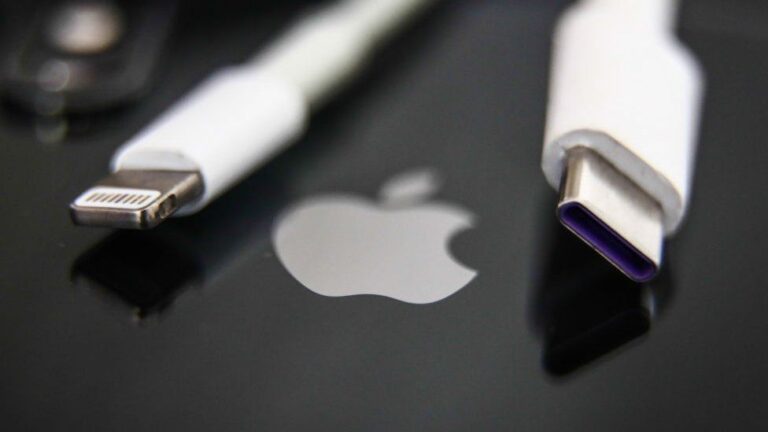What we’re seeing is a classic first-world split between iPhone users and Android adopters: iPhones for the Apple acolytes and those who enjoy a classic, timeless brand with intuitive features; Android for the more “rebellious” phone user, who enjoy the open-source platform, ability to customise, affordability and a place to put a headphone jack.
USB-C vs. Lighting Ports
Perhaps another benefit is the fact that an Android has a USB-C port. This little port facilitates the charging of said Android phone, and it can also be found on many wireless headphones, speakers, laptops and video controllers, as well as cameras, desk lights, electric shavers, rechargeable battery packs and everything in between. It’s like a bit of a complicit technological agreement that most things that require a port should have a USB-C one.

That is apart from Apple, which persisted for years with its own proprietary hardware charging facilities. The current iteration is the Lightning port and cable, a replacement for the 30-pin connector that the old iPod and first iPads were required to use to get some juice.
Of course, it makes sense for Apple to stick with its Lightning cable – it comes with a built-in chip, which means the company can enforce an extremely profitable licensing avenue. Other companies that manufacture Lighting companies have to join Apple’s special “MFi program” that pays Apple royalties every year to make the cables. If the world switches to USB-C, then Apple loses a revenue stream.
EU Passes Law on Common Charging Cable
In a recent announcement, the European Commission decided to make the USB-C a standard port because it was responding to accusations that large companies weren’t doing enough to allow its customers a “right to repair” feature and put an end to the huge amounts of ewaste.
“By the end of 2024, all mobile phones, tablets and cameras sold in the EU will have to be equipped with a USB Type-C charging port”
Apple responded by saying that millions of its users already had the Lightning cable so why try to enforce the move now, claiming that the decision was simply encouraging more forms of ewaste. The Commission responded by saying that people will be able to use one type of wire and charger for all their devices as opposed to multiple options.

What was the outcome?
Apple eventually relented saying it will comply with the ruling, but didn’t go so far to suggest that this would be a global shift in its hardware. However, the benefits of the USB-C port – faster charging and data-sharing capability – will be nothing but positives for Apple, a company that puts speed and seamless design at the heart of its brand values. Apple has already made its Macbooks and iPad tablets USB-C compatible, so it might not be long until we see a full switchover.
So good news for Android users and other USB-C port aficionados. USB-A users, fall in line and buy a dongle converter soon, prepare for a future with USB-C, and look forward to the inevitable development of USB-D!



